Increase home value and protect what’s inside with a long-lasting roof
Whether you are installing a new roof on a new house or replacing an older roof that is no longer doing its job, there are many choices in terms of the types of roofing materials available. Some of the different options include asphalt shingles, tile roofing, metal roofing and more.
Factors that determine what type of roofing is best include the slope and complexity of the roof, as well as the style of the house, local climate and the cost of different roofing options.
At H&H Roofing and Restoration of Eastern Kansas and Western Missouri, you can trust that you’ll have the best roofing in no time!
Contact us today for your Free Estimate. We provide quality roofing services, including roof repair, roof replacement and installation in Kansas City, Overland Park, Independence, Olathe, Lawrence, and the surrounding areas of Kansas!
Asphalt & asphalt fiberglass shingles
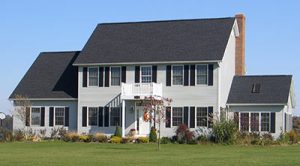
Although these terms are used interchangeably, most roof shingles used today are technically known as asphalt fiberglass shingles. The fiberglass mat embedded in the shingle provides an extra measure of strength and tear resistance.
These shingles are the most popular type of roofing for sloped roofs because they’re affordable, easy to install, durable, and available in a wide variety of colors. Premium grades of “laminated” asphalt fiberglass shingles are typically warrantied for 50 years.
Wood shingles & shakes
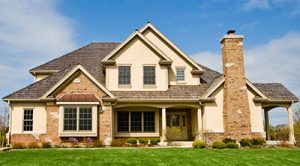
Wood shingles and shakes usually come from red cedar, Alaskan yellow cedar or Eastern white cedar. These evergreens produce wood that is dimensionally-stable and naturally resistant to rot and insect attack.
The main difference between shingles and shakes is that shakes are split from the log and have a rough, random texture; shingles have a smoother surface because they’re sawed. A wood roof is expensive, and requires extra skill to install. That’s why most people avoid installing this type of roof unless they’re dealing with an historic house.
Clay & concrete tile roofing
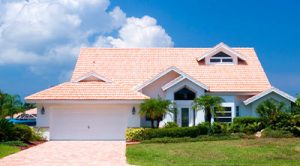
Clay and concrete tile roofing are often grouped together because they are both masonry roofing materials with similar installation requirements. Whether clay or concrete is used as the molding material, the end result is a roofing tile designed to overlap and/or interlock with adjacent tiles.
Clay and concrete tile roofs are well-suited for hot climates that don’t have high rainfall; they shouldn’t be installed in areas where heavy, regular rains and freezing temperatures are common.
Rubber roofing
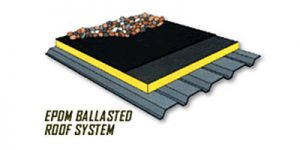
Although rubber has been around for a long time, rubber roofing is fairly new. That’s because it’s taken a great deal of chemistry research to develop a thin rubber membrane with the durability and waterproof qualities required of a roofing material. Rubber roofing is sometimes referred to as EPDM roofing. EPDM is an abbreviation for ethylene propylene diene monomer, the highly engineered compound used to manufacture most types of rubber roofing. Rubber roofing is used primarily on flat or low-slop roofs in both commercial and residential buildings.
A “membrane roof” usually refers to a rubber or EPDM roof that is installed in a flat roof or a low-slope application. Many commercial buildings have membrane roofs; few houses do.
Composite Roofing
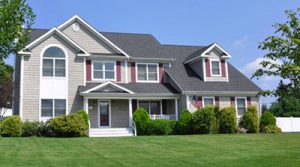
The term “composite” can apply to several different types of roofing, since it simply implies that a number of different materials are used in the manufacturing process. Today one of the most common types of composite roofing is a simulated roofing slate that is made from resins and from rubber compounds extracted from reclaimed tires. This slate look-a-like offers excellent longevity and a lower installation price while providing the appearance of a traditional slate roof.
Metal roofing
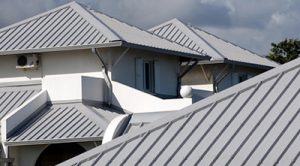
Metal roofing is a huge category that includes factory-formed and finished roofing panels as well as roofing panels that are cut and formed at the building site. Metal roofing has a long history of use on houses, farm structures and commercial buildings. Its main limitation is that it’s not suitable for use on complex or curved roofs. Like corrugated roofing, many metal roofs can be installed directly over a worn-out older roof without tearing off the old roofing material.
Corrugated roofing
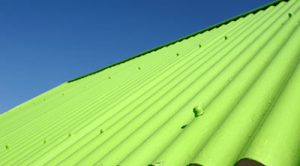
Corrugated roofing is easy to spot because of its distinctive form; it’s a thin sheet that contains a symmetrical pattern of alternating ridges and grooves. Most corrugated roofing comes in sheet form, but large shingles are available from some manufacturers. This type of roofing can be made from steel, polycarbonate or an asphalt-fiberglass composite. It’s more appropriate for agricultural and commercial buildings and for small sheds than it is for houses. One important advantage with corrugated roofing is that it can be fastened down over an existing shingled roof without removing the original roofing material.
Flat roofing
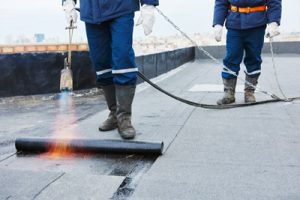
This roofing category is often grouped with “low-slope” roofing because many of the roofing treatments are the same. The most common flat-roofing materials used on residential and commercial buildings today include single-membrane systems like EPDM or rubber roofing, thermo-polyolefin (TPO) roofing and PVC roofing. Metal roofing is sometimes used on low-slope roofs, but not on flat roofs.
High-density Spray Polyurethane Foam (SPF) roofing is a system that coats the roof with a continuous layer of foam insulation that can also serve as the finished roof surface (as long as a protective coating is applied over the foam).
Slate roofing
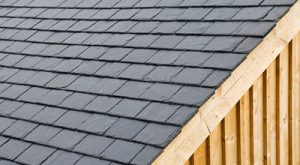
Most roofing slate used in the U.S. comes from slate deposits in Vermont and Pennsylvania.
Expensive to manufacture and tricky to install, this “stone” roof is among the most expensive available. When properly installed and maintained, a slate roof can last for 75 years or more.
Choosing the right roofer is just as important as using quality materials
H&H Roofing and Restoration is a full-service roofing contractor, specializing in everything from new roof installations, roof repairs and maintenance to total roof replacements. It doesn’t matter what type of roofing system we are working with, we always ensure quality workmanship, excellent customer service and a long-lasting, durable roof over your head.
Our roofers work throughout the Eastern Kansas and Western Missouri area, including Independence, Olathe, Lawrence, Kansas City, Overland Park, Lenexa, Spring Hill, Leavenworth, Blue Springs, Shawnee and many parts of Kansas. Call us at 1-620-332-9249 today to schedule an appointment for a roofing estimate.
Looking for a price? Get a no cost, no obligation free estimate.



